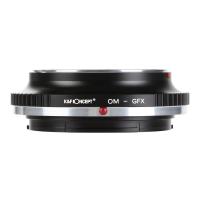What Is The X-ray Microscope Used For ?
An X-ray microscope is a type of microscope that uses X-rays to produce high-resolution images of objects. It is used in various fields such as materials science, biology, and nanotechnology to study the internal structure of materials and biological samples. X-ray microscopes can provide detailed information about the composition, density, and morphology of samples at a resolution that is not possible with other types of microscopes. They are particularly useful for studying samples that are difficult to image with other techniques, such as those that are opaque or have complex internal structures. X-ray microscopes can also be used to study the behavior of materials under different conditions, such as temperature and pressure, and to investigate the properties of new materials for use in various applications.
1、 X-ray microscopy techniques
X-ray microscopy techniques are used to produce high-resolution images of biological and non-biological samples. X-ray microscopes use short-wavelength X-rays to penetrate the sample and create an image based on the absorption and scattering of the X-rays. This technique allows for the visualization of structures that are too small or too dense to be seen with traditional light microscopy.
X-ray microscopy has a wide range of applications in various fields, including materials science, nanotechnology, and biology. In materials science, X-ray microscopy is used to study the microstructure of materials, such as metals and ceramics, to understand their properties and behavior. In nanotechnology, X-ray microscopy is used to study the structure and behavior of nanomaterials, which are materials with dimensions on the nanometer scale.
In biology, X-ray microscopy is used to study the structure and function of cells and tissues. X-ray microscopy can provide high-resolution images of biological samples without the need for staining or sectioning, which can alter the sample's structure. X-ray microscopy has been used to study the structure of viruses, bacteria, and cells, as well as to visualize the distribution of metals and other elements in biological samples.
The latest point of view on X-ray microscopy is the development of new techniques that allow for faster and more precise imaging. For example, X-ray ptychography is a technique that uses a scanning X-ray beam to create high-resolution images of samples. This technique has been used to study the structure of cells and tissues with unprecedented detail. Another development is the use of X-ray free-electron lasers, which can produce extremely bright and short X-ray pulses that can capture images of samples in motion.
In conclusion, X-ray microscopy techniques are used for a wide range of applications in various fields, including materials science, nanotechnology, and biology. The latest developments in X-ray microscopy are focused on improving imaging speed and precision, which will enable new discoveries and applications in the future.

2、 Imaging resolution and contrast
The x-ray microscope is a powerful tool used for imaging resolution and contrast. It is capable of producing high-resolution images of biological and non-biological samples with exceptional clarity and detail. The x-ray microscope works by using a beam of x-rays to illuminate the sample, which is then detected by a detector. The resulting image is then reconstructed using sophisticated computer algorithms.
One of the main advantages of the x-ray microscope is its ability to image samples that are difficult or impossible to image using other techniques. For example, it can be used to image the internal structure of cells, tissues, and organs, as well as the structure of materials such as metals, ceramics, and polymers. This makes it an invaluable tool for a wide range of applications, including materials science, biology, and medicine.
In recent years, there has been a growing interest in using x-ray microscopy to study the structure and function of biological systems at the nanoscale. This has led to the development of new techniques and technologies that are capable of producing even higher resolution images with greater contrast and sensitivity. For example, researchers have developed x-ray microscopy techniques that can image the distribution of specific molecules within cells, as well as the dynamics of cellular processes such as protein synthesis and transport.
Overall, the x-ray microscope is a powerful tool that is revolutionizing our understanding of the structure and function of biological and non-biological systems at the nanoscale. Its ability to produce high-resolution images with exceptional clarity and detail is opening up new avenues of research and discovery in a wide range of fields.

3、 Applications in materials science and biology
The x-ray microscope is a powerful tool used in both materials science and biology. In materials science, it is used to study the microstructure of materials, including metals, ceramics, and polymers. The x-ray microscope can provide high-resolution images of the internal structure of materials, allowing researchers to study defects, grain boundaries, and other features that affect the material's properties. This information can be used to develop new materials with improved properties or to optimize existing materials for specific applications.
In biology, the x-ray microscope is used to study the structure and function of cells and tissues. It can provide detailed images of the internal structure of cells, including organelles such as mitochondria and the endoplasmic reticulum. This information can be used to study cellular processes such as protein synthesis and cell division, as well as to develop new treatments for diseases.
The latest point of view on the use of x-ray microscopy is the development of new techniques that allow for even higher resolution imaging. For example, researchers are using x-ray holography to create three-dimensional images of cells and tissues with nanometer-scale resolution. This technique could provide new insights into the structure and function of cells and tissues, as well as new opportunities for developing treatments for diseases.
Overall, the x-ray microscope is a versatile tool with applications in both materials science and biology. Its ability to provide high-resolution images of the internal structure of materials and cells makes it an essential tool for researchers in a wide range of fields.

4、 Synchrotron radiation sources
What is the x-ray microscope used for? X-ray microscopes are used to study the internal structure of materials at a very high resolution. They use synchrotron radiation sources, which produce intense beams of x-rays that can be focused down to a very small spot size. This allows researchers to study the atomic and molecular structure of materials in great detail.
X-ray microscopes have a wide range of applications in materials science, biology, and medicine. They can be used to study the structure of metals, ceramics, and other materials, as well as biological samples such as cells and tissues. In medicine, x-ray microscopes are used to study the structure of bones and other tissues, and to develop new diagnostic and therapeutic techniques.
One of the latest developments in x-ray microscopy is the use of coherent x-rays, which can produce images with even higher resolution and contrast than traditional x-ray microscopes. Coherent x-rays are produced by synchrotron radiation sources that have been optimized for this purpose. They are being used to study a wide range of materials, from biological samples to advanced materials for electronics and energy storage.
Overall, x-ray microscopes are a powerful tool for studying the structure of materials at the atomic and molecular level. With the latest advances in synchrotron radiation sources and coherent x-ray imaging, they are likely to continue to play an important role in materials science, biology, and medicine for years to come.





























